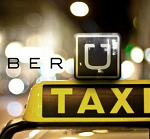With the arrest of an Uber taxi driver in India’s capital city New Delhi on charges of rape, Uber—the most highly-valued U.S. technology startup, is battling a crisis in India and a global PR disaster. Uber is facing a blanket ban on its thirteen-month-old service in New Delhi, as well as Hyderabad after the government threw the book at the company citing various gaps in the mobile application-based service’s operations. Uber’s ban also endangers investments worth millions of dollars, raising the prospect of Uber becoming the BJP-led government’s Vodafone moment.
Uber, founded by Garrett Camp and Travis Kalanik in 2009 in the U.S. with an initial capital of $200,000 is currently valued at U.S.$ 40 billion. It had its first successful run in New York as a luxury car service called Uber Black and now has various versions across the globe such as Uber X and Uber Pop – which cost 20-25% less than the local taxi. Media reports suggest that in the latest round of investments for Uber, about 40% is being pumped from India.
Uber’s business model allowed individuals to have drivers of cars such as BMW and Audi at their door steps within a minute’s notice with a quick tap on the screen of their smart phone. With the use of technology, Uber filled a critical gap of creating a local network through word-of-mouth recommendation coupled with market focus i.e. creating a database of drivers willing to be on call and as glued in technically as the rest. Since its launch, Uber has used an application to connect the customer with the vehicle. The GPS-based app asks you to register by filling in your name, phone number, email address and credit card details. As soon as you set your pick up location on a map, Uber dispatches the nearest car. The app gives the name of the driver along with his picture, the type of car and its licence number. A black icon on the map indicates where the car has reached en route to you. Once you reach your destination, the fare is deducted from your registered card.
Uber has also famously claimed that regardless of where you use Uber, you get a reliable, convenient and safe ride. This claim was recently busted in New Delhi after investigations into the rape of a customer showed the Uber driver did not have a GPS tracking device fitted in the car, had a fake character certificate along with the wrong permits. Shiv Kumar Yadav, the accused driver was a history-sheeter who had spent time in jail for rape.
Investigations into Uber’s operations have also raised questions on its existence as a legal entity. According to the Delhi Transport department requirements any company working on the cabs-for-hire model is required to register as a Taxi-service and also ensure that the drivers are totally safe, reliable and trustworthy. But Uber never applied for any permission as it claims to be an app-based service and is not recognised under the Radio Taxi Rules. To add to this, the Reserve Bank of India put out an order that would effectively require Uber to shut down unless it tweaked its payment model. The RBI has said that Uber and other companies that offer app-based purchases cannot allow customers to pay with their credit cards without a two-step authentication process. Currently, every ride is automatically charged to the card without any further verification.
As Uber’s operations have expanded with a year-on-year profit of 18% so have its troubles. Uber is facing trouble in five countries across Europe. Thailand has ruled Uber illegal, and the service has hit regulatory hurdles in locations from Germany to San Francisco.
Uber’s latest brush with infamy was its imposition of the surge pricing strategy in the central business district of Sydney during the hostage crisis on December 15. Uber’s surge pricing increases the basic rates in a particular area to get more cars on the road and prices go back to normal levels when enough cars are in circulation. Uber began charging passengers a minimum of AUS$ 100 for a ride, four times the normal fare as Sydney’s business district was asked to shut down. Uber has always imposed surge pricing when demand for rides is at its highest. This strategy has drawn considerable flak since its launch, and its automatic application in an emergency situation was poor strategising, to say the least. A day later, Uber offered a refund to all the passengers who were charged under the surge pricing in Sydney, however the damage had already been done.
The India crisis has thrown up major lacunae in Uber’s operations: its categorisation as a service provider, the lack of complete oversight of its drivers, a faulty verification process and most importantly, the Uber staff’s tardiness in tackling complaints which compromised a passenger’s safety. However, Uber’s success allowed it to raise close to $1.2 billion dollars in its last round of investments which means that even as technology changes lives and businesses break new ground, the balance between forging into the future and having an adaptive regulatory environment is the need of the hour.
For Uber which prides itself on a disruptive business model, the future will be anything but a smooth ride as it will have to battle regulatory restrictions across the globe and strategise against copy-cat business models along with justifying its multi-billion dollar valuation.
Marisha Dolly Singh is Content Manager with the Gateway House Website.
This blog was exclusively written for Gateway House: Indian Council on Global Relations. You can read more exclusive content here.
For interview requests with the author, or for permission to republish, please contact outreach@gatewayhouse.in.
© Copyright 2014 Gateway House: Indian Council on Global Relations. All rights reserved. Any unauthorized copying or reproduction is strictly prohibited


